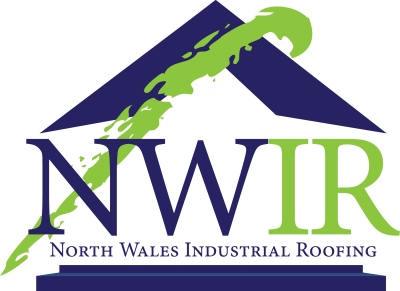Commercial Flat Roof: Finding The Best Material
Whether you’re planning a new build or maintaining a current property, choosing the right material for the job is essential if you want something that’s going to last; and nowhere is this more important than in the construction of your commercial flat roof.
There are a range of options out there for flat roof materials, many of which are still surprisingly under-used by the roofing construction industry. Take a look at our list of the most common roofing material choices below, and weigh up carefully which might be the one for you.
Single Ply Bitumen Felt
Pros: A single ply layer of modified bitumen felt applied to your roof can last quite a long time due to its flexibility, which can absorb any substrate movement and changes in weather conditions. It is also environmentally friendly and its reflective nature makes it highly energy efficient. Bitumen roofing is easily repaired, albeit rather scruffy looking once fixed.
Cons: Some older installation methods can be quite dangerous and require the use of a blowtorch, so try to find a contractor who provides a more modern installation. The material is also prone to scuffing and tearing, so avoid using it if your roof sees heavy foot traffic.
Built Up Roof (BUR)
Pros: A built-up roof comprises of an aesthetically pleasing layer of gravel on the top coat, and several insulating layers beneath it. This is a cheap option and therefore unsurprisingly it is very commonly used.
Cons: The weightiness of a BUR requires joists in the existing roof to be reinforced in order to cope with the excess load. This extra cost needs to be factored in to the overall savings against other roof types, as does the extra installation time required.
Single Ply EPDM
Pros: This single ply membrane is a durable roofing material, with some contractors offering 50 year guarantees on its lifespan. Easily repaired, but like bitumen it will look scruffy once patched. If expansion and contraction is an issue for your roof due to temperature, EPDM is definitely the choice for you.
Cons: Seams in an EPDM roof are adhesive fixed, and therefore susceptible to splitting. This makes for a maintenance intensive roof over the long term. They are also not particularly pleasing to look at, especially if it has been poorly fitted. The perceived simplicity of EPDM installation leads to quite a few botch jobs.
Single Ply PVC
Pros: Very durable and reflective, which leads to lower energy costs, sometimes by as much as 25-50 percent. Very easy to install, a PVC single ply roof resists water pooling due to its non-permeable nature. Its recyclable nature also adds to your building’s green credentials.
Cons: Much like EPDM the main flaw in PVC roofing relates to its installation method. The material is applied in rolls, which means that the roof is susceptible to damage at the seams. With proper attention these areas can be made waterproof, but it will never be as easily maintained as a seamless roof system.
Liquid / Spray Roofing
Pros: Spray or liquid applied roofing uses a silicone coating to coat your roof entirely, obliterating the seaming problems from most single ply installations. This style of roof is resistant to water pooling, highly reflective, and sustainable. This leads to lower energy costs, fewer maintenance issues, and an environmentally friendly roof repair method.
Cons: The best things in life are never cheap, and liquid or spray applied roofing is expensive. They can be one of the most costly roof covering methods to initially install, but of course this should looked at in context with the constant repairs required of seamed styles, and of course the reduction in energy expenditure.
Regardless of your budget, environment or building demands, there are many commercial flat roof materials for you to select from. For further information about the types of flat roof material that are available, don’t hesitate to contact us and book your FREE site survey today.
